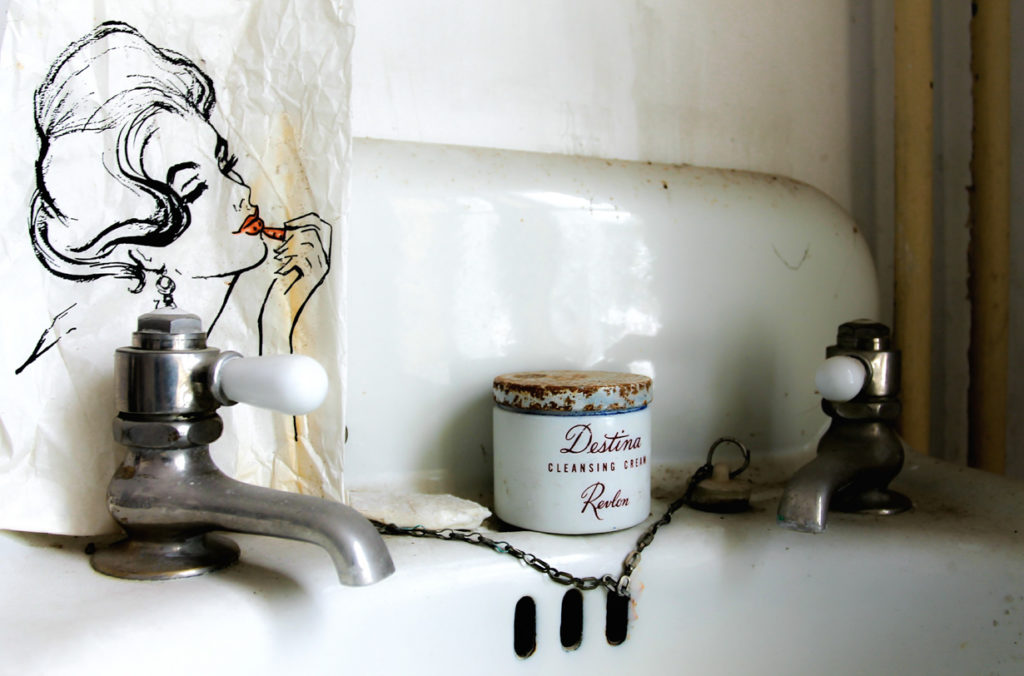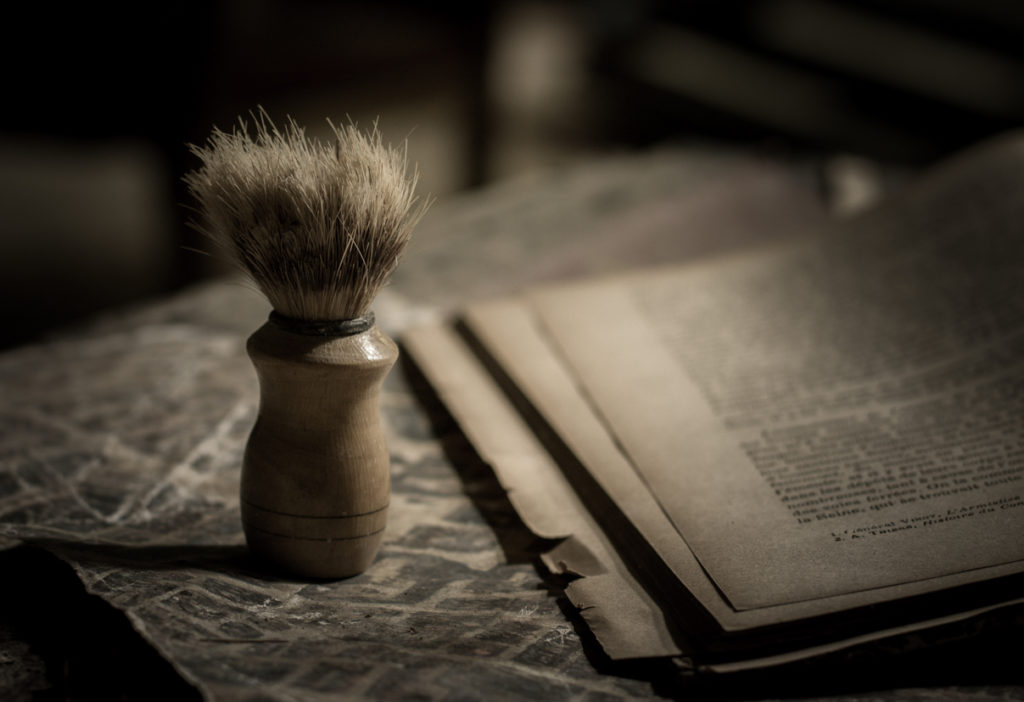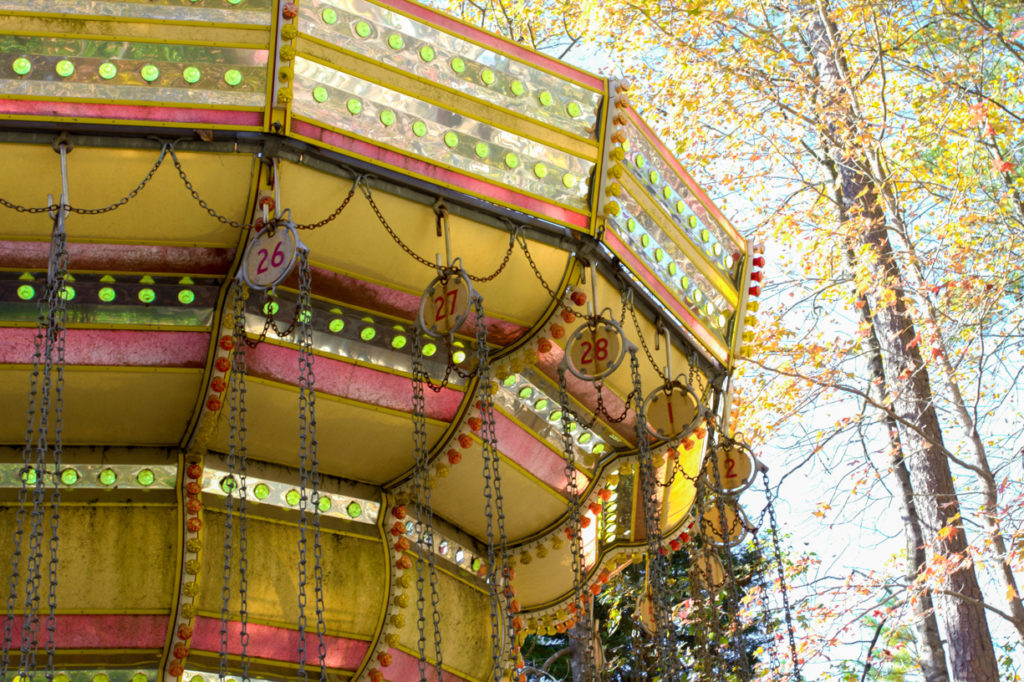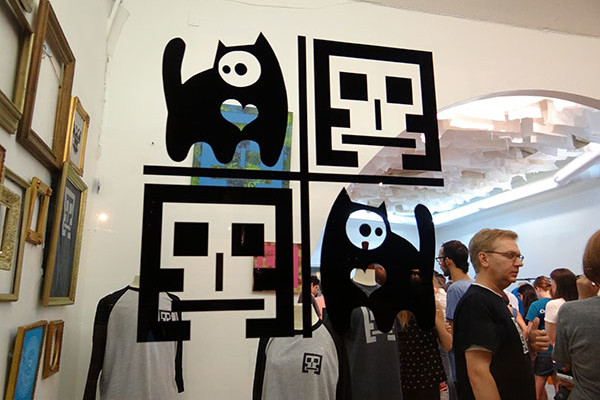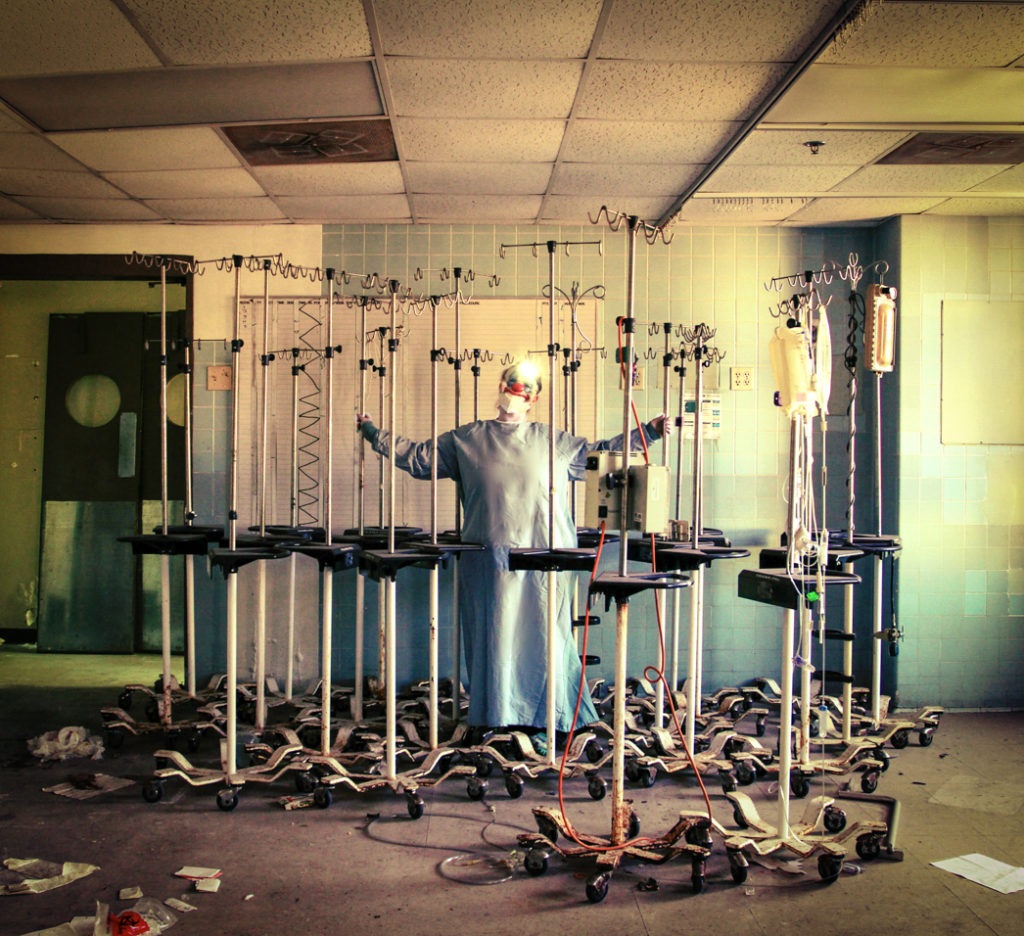 If you’ve ever wondered what it would look like if you collided the worlds of the dark and dangerous with the bright and magnificent, then look no further. That style is made possible through the lens of photographer Kathryn Nee.
If you’ve ever wondered what it would look like if you collided the worlds of the dark and dangerous with the bright and magnificent, then look no further. That style is made possible through the lens of photographer Kathryn Nee.
The Atlanta native says it’s hard to describe how she decides what to shoot. “When I see something,” Nee says, “I just know.” After about five years of experimenting with her camera and exploring abandoned spaces, the award-winning photographer (she snagged first place in the Atlanta Photographic Society’s Environmental Portrait competition this year, among others) decided to pursue her goal of being a wedding photographer and started a business early in 2015.
Here, CommonCreativ chats with the award-winning fine art and portrait artist about getting her start in photography and what excites her about Atlanta’s creative scene.
CommonCreativ: When did you first get into photography?
Kathryn Nee: I knew I wanted to be a photographer at a very young age — more specifically, I wanted to be a National Geographic photographer. I was always running around with my Kodak, snapping photos of nonsense, spending my weekly allowance on film and photo developing. Towards the end of my teen years, my parents gifted me a Nikon N60. That was when things really took off creatively for me and I began being more thoughtful about what I shot. It wasn’t until about five years ago that I took interest in photographing abandoned spaces.
CC: Where did you grow up and what drew you to Atlanta?
KN: I was born in Atlanta but grew up in a small town in Gwinnett County. I now live in the East Atlanta Village where I feel deeply connected to the vibe and culture. Atlanta is a magical city. The art scene, the culture, the music, the weirdness, the inclusiveness, I am literally in love with my melting pot of a city. I craved diversity as a child and growing up where I did, there was very little of that.
CC: What first drew you to your style of photography?
KN: It’s hard to describe how I decide what to shoot. There’s no pondering, I just start setting up and I figure out through my lens why I was drawn to it. I can say, though, that I really like artifacts. I refer to them as “human remains.” Human remains are my favorite. I love coming across objects that tell a story about the people who spent a lot of time there.
CC: What are some of the things you’ve seen?
KN: The first big explore I ever did was a big abandoned factory in Cincinnati, which I shall not name. The factory had been abandoned for over 10 years, but there was a coffee mug on the manager’s desk, along with employee paperwork, files, time sheets, incident reports, pay stubs, bills, calendars, etc. Jumpsuits and hard hats were still hanging on hooks outside of the break room. There were even personal belongings left inside employee lockers. It looked as if the workers clocked out and never came back. Everything was just frozen in time — literally and figuratively. It was January in Ohio!
That factory really sealed the deal for me, and I haven’t stopped searching out abandoned spaces since Other things I’ve seen would be…a dead body, syringes with coagulated blood left in hospitals, creepy autopsy observation arenas, fully stocked operating rooms, a cannon sitting in the living room of an abandoned chateau in France, spiders the size of a small child, a farmhouse where all six beds were still made, a carpet of grass growing on the second floor of an abandoned hotel in Germany, food in kitchen cabinets that expired in 1973, and a hair salon that had magazine cutouts of [famous fashion model] Gia taped to the walls! That’s just the tip of the iceberg.
CC: If you could go anywhere with your camera, where would you go?
KN: I’d take my camera to Belgium. I was lucky enough to travel through Europe earlier this year, but the tight schedule didn’t allow us time to drive through Belgium. [You can take a glimpse at Kathryn’s Europe trip here.]
CC: What do you need to have in your bag to explore?
KN: If you’re going to do this, you need a quality tripod, a good pair of boots, a flashlight, and a first aid kit. You’re going to get injuries. It’s inevitable.
CC: How have you developed your style as a photographer?
KN: When I first started out, I couldn’t focus. Sometimes I’d see things that were so overwhelming, I couldn’t get my camera set up because I was shaking. I’d even forget how to use it. I’ve definitely got a better grasp on it now. Not feeling focused can cause you to walk around shooting aimlessly at things that may not have any artistic value. I really take my time now. You need a lot of patience for “urbex.” Long exposures are essential. It can take me upwards of 10 minutes to take one photo. I’ve come a long way from leaving a place with 400 useless shots. Now I can leave with five-to-six stellar images and feel like I’ve hit the photography jackpot.
 CC: Can you walk us through the process of how you set up for a shoot?
CC: Can you walk us through the process of how you set up for a shoot?
KN: A lot of research is involved. It also helps to surround yourself with awesome people that share the same passion. I have a talented group of people in my life that love this as much as I do. We share information and take lots of road trips. Six people to one roach-hotel room isn’t unusual but the camaraderie is worth it. Setting up usually involves a walk through. After that, I can calm down, pick my jaw up off the floor and begin working through a place, one room at a time. I see some incredible things, things that the majority of folks will never witness in their lifetime. I feel grateful that I’m able to do this for fun. I never take it for granted.
CC: Are there any collabs you’ve done that you really enjoyed? Who would you love to collab with next?
KN: I’ve been privileged to work with a local artist named Jennifer Upton. She defines artist in every sense, photographing, writing, working her fingers to the bone creating masterpieces from metal and wood. I really like how organic her work is. In 2015, we collaborated on a piece that I hold dear. She used an image of mine entitled Nobody’s Wife, transferring it onto a metal plate, then mounting it to wood. It may sound simple, but her process is lengthy and requires a steady hand and a lot of patience. She and I will be showing work in smaller pop-ups throughout December in the Atlanta area.
CC: What’s up next for you?
KN: I’m really digging local artist Anthony Harris, of Shooting the Shot Productions. We collaborated as well, using video footage I brought back from my trip to Europe. Anthony accepted the challenge and made magic out of my mediocre iPhone videos. His 50mm Project images are so good, they’ll make your head spin. I plan to trick him into doing a gallery show with me next year, so be on the lookout for that.
CC: What are your thoughts on the Atlanta art scene?
KN: My experience with it has been really positive. The Atlanta art scene is kind of like its own little ecosystem, and I feel honored to be part of it.
You can view more of Kathryn Nee’s work on her portfolio site.

